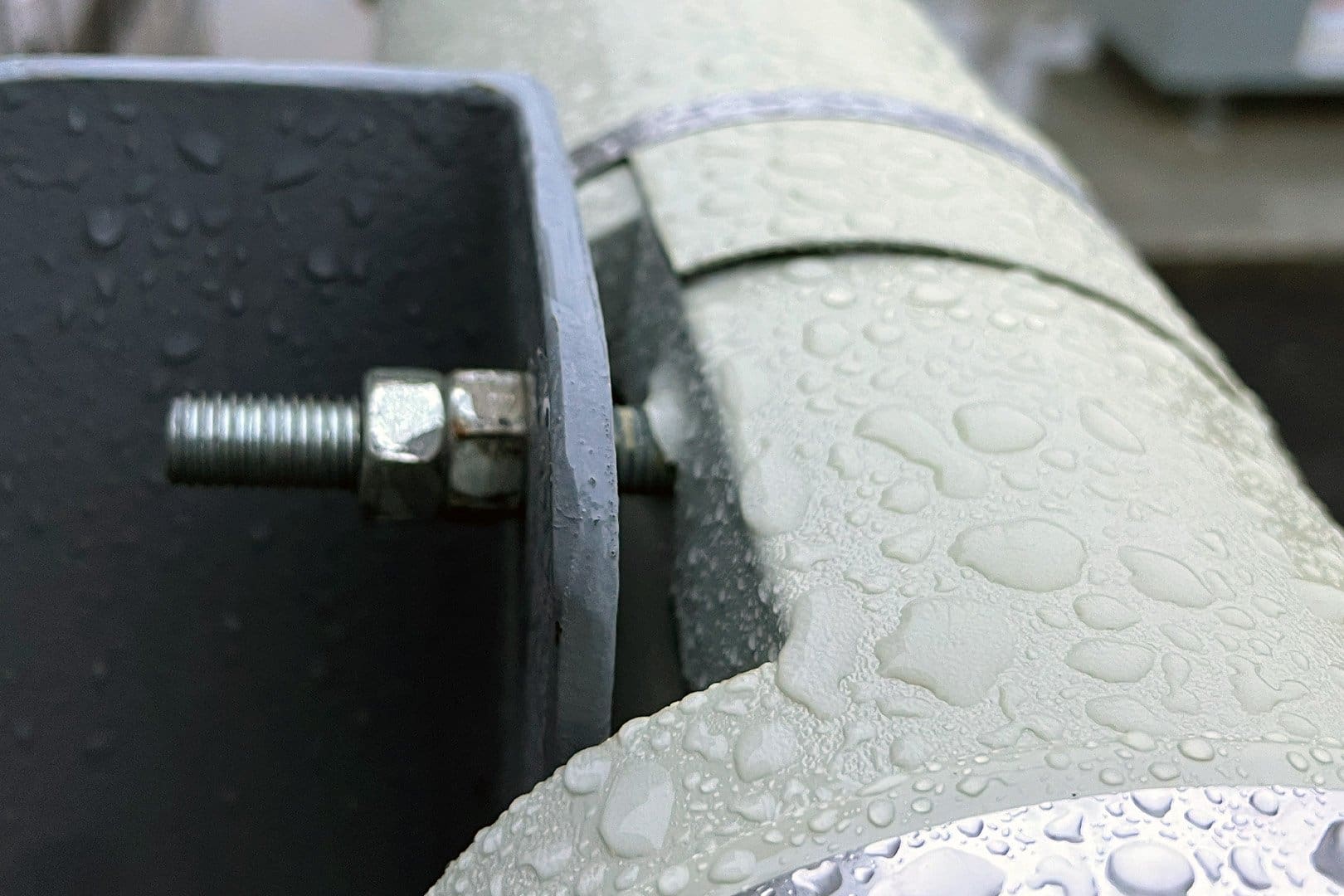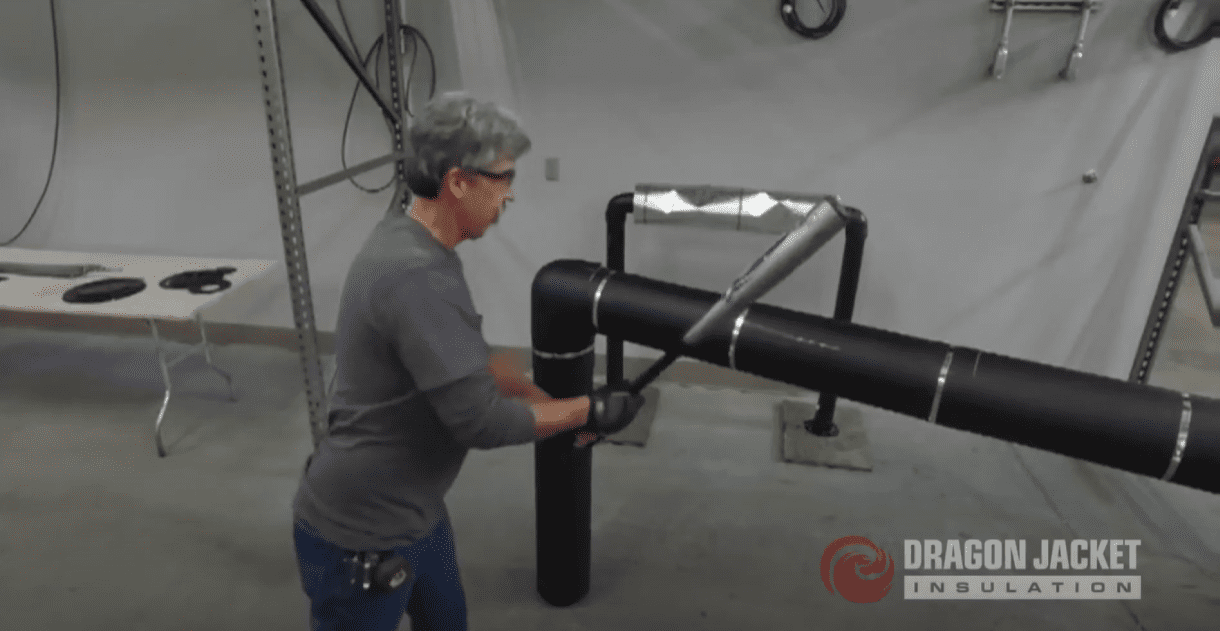Insulating Outdoor Pipes – What You Need to Know
For industries including chemical production, energy, oil and gas, mining, and infrastructure, outdoor pipelines are critical to operations. But outdoor pipes are vulnerable, and protecting them requires insulation that is durable, safe and efficient. Proper insulation is critical to outdoor pipeline operations for a number of reasons.

Safety
Hot outdoor pipes that are not insulated can be a safety hazard for crewmembers, and improperly insulated pipes can suffer from corrosion, which can cause a pipe to break or explode, resulting in injury to team members and damage to equipment.

Efficiency
Poorly insulated or non-insulated outdoor pipes are subject to weather extremes, causing the energy usage required to maintain pipeline temperatures to soar.

Longevity
Outdoor pipeline insulation needs to be durable because it protects pipelines from UV rays, animals, harsh wind, hail, rain, temperature fluctuations, and potential exposure to corrosive elements such as salt water.
What Are the Challenges Related to Insulating Outdoor Pipes?
Insulating outdoor pipes is particularly difficult because of the varied environmental conditions that insulation must withstand. Durable materials and strategic design are critical to providing insulation that can maintain its integrity over time, as well as withstand the temperature fluctuations, weather conditions, and exposure to corrosive elements that come with being outdoors.

Key Factors to Consider When Choosing Outdoor Pipeline and Tank Insulation
Materials selection and environmental considerations are the most important things to consider when choosing outdoor pipeline insulation.
How To Evaluate Insulation Materials
- THERMAL CONDUCTIVITY – How successful is it at keeping heat in and cold out and vice versa? Can the insulation perform in both sub-zero and high-heat conditions?
- MOISTURE RESISTANCE – Does the insulation maintain its thermal resistance when wet, or does it lose its ability to insulate? Does it absorb moisture and hold it on the pipeline setting the stage for damaging, dangerous corrosion to take place? Or does it feature a dripline and waterproof barrier that allows moisture to escape and keeps moisture from seeping into the insulation bulk?
- CHEMICAL RESISTANCE & WEAR AND TEAR – How capable is the insulation of resisting chemical breakdown? Will it fall apart if exposed to acidic or caustic materials? Can the insulation stand up to abrasion and wear and tear from being in contact with industrial equipment or environmental conditions like sand or dust storms?
- MAINTENANCE ACCESSIBILITY – Can the insulation be removed and reinstalled easily for regular pipeline inspections? Is the insulation easy to handle at height?
- HEAT TRACE COMPATABILITY – When exposed to moisture, will the insulation negatively impact heat trace systems? Can the insulation be easily displaced, exposing the heat trace elements and rendering the entire system useless?
Environmental Considerations When Selecting Insulation Should Include
- UV EXPOSURE – Will the insulation be exposed to the sun all day, and is the insulation material made to resist UV degradation?
- WIND & WEATHER – Will the insulation be installed in an area subject to high winds and weather events? Will the insulation be able to maintain its shape and position when exposed to extreme weather, or will it shift, fall off, or be otherwise displaced, exposing the pipeline and canceling out any insulative benefit?
- MOISTURE EXPOSURE – Is the insulation engineered to perform when exposed to rain, snow, hail, humidity, coastal fog, or heavy washdowns? Is the insulation supported by a protective cladding, coating, and drainage that is protective against moisture infiltration and CUI?
- FIRE RESISTANCE – Does the insulation have a Class A Fire Rating? Will it ignite quickly and easily when exposed to fire or explosion? Is it code-compliant?
- VIBRATION & PIPELINE MOVEMENT – What happens when the pipeline is operating under conditions that result in movement? Does the insulation move with the pipeline and maintain its shape and placement? Or does it become loose or fall off? Can the insulation withstand thermal expansion and contraction?

There is One Insulation Solution that Checks All the Boxes
Dragon Jacket Insulation was engineered to perform in demanding operational environments and to withstand the extreme conditions that can destroy less capable insulation systems.
DRAGON JACKET INSULATION
- 100% Encapsulated
- 100% Waterproof & Oilproof
- Chemical and UV-Resistant
- Top R-Values on the Market
- Unmatched Thermal Stability
- Fast & Easy Installation
- Removable & Reusable
- Impact Resistant
- 20+ Year Lifespan
Dragon Jacket Insulation is easy to handle, remove, and reinstall over and over without any degradation of shape or capability. Highly durable, Dragon Jacket is capable of withstanding outdoor conditions and the toughest operational environments, is Class A fire rated, and inhospitable to rodents or other animals.





